One
CARPINTERIA’S
THUNDERBOWL
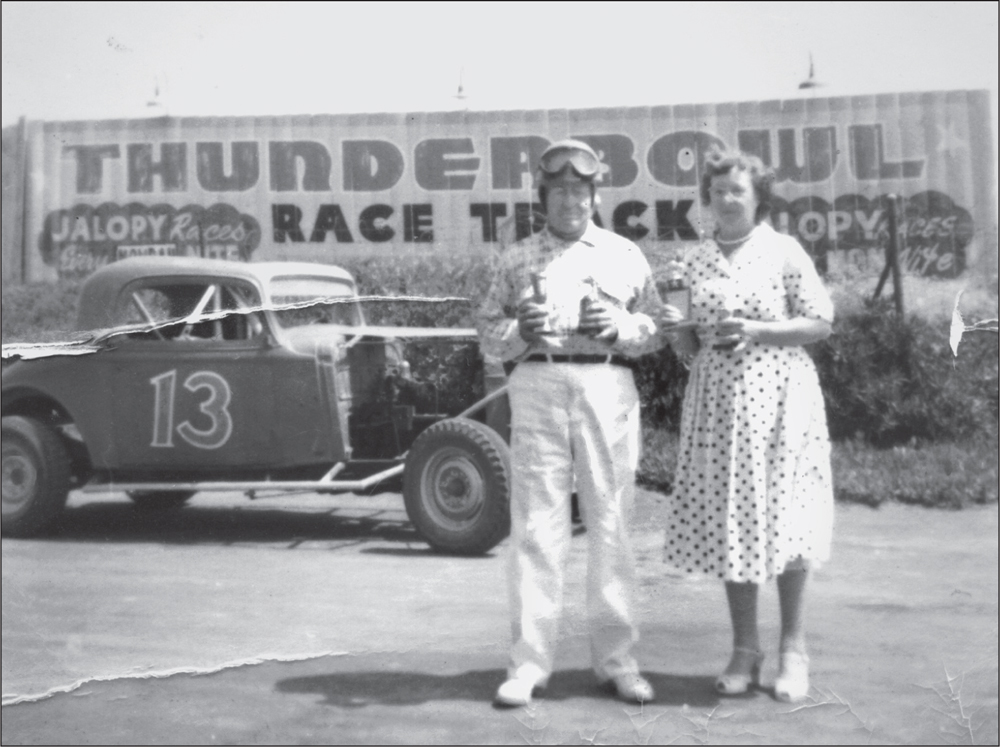
Carpinteria’s contribution to hot rod culture was the Thunderbowl racetrack, home of jalopy racing. Owner J.F. Slaybaugh, pictured here in 1958 with his wife, Pearl, was an old sprint and midget car racer from the 1930s who still enjoyed an occasional run on the track. That is his orange Pontiac coupe in the background. Charging $1.25 admission (children were free), Slaybaugh made the Thunderbowl the biggest of a string of half-mile dirt tracks that stretched from Oxnard to Santa Maria by offering a full night’s entertainment to the people of the late 1940s. Besides a night of action-packed jalopy racing, he had special events like “powder puff derbies” (featuring all female drivers), gave away television sets, and even offered free bubble gum to the kids. Racing at the Thunderbowl started in 1947 and would go on until the early 1960s when the Highway 101 expansion project reached the track. The California Department of Transportation needed somewhere to put all the earth that would be displaced when it cut the highway through nearby Rincon Point, and unfortunately, the Thunderbowl was the perfect location. The department made Slaybaugh a large cash offer, and he accepted, sealing the racetrack’s fate. (Courtesy of Lee Hammock.)
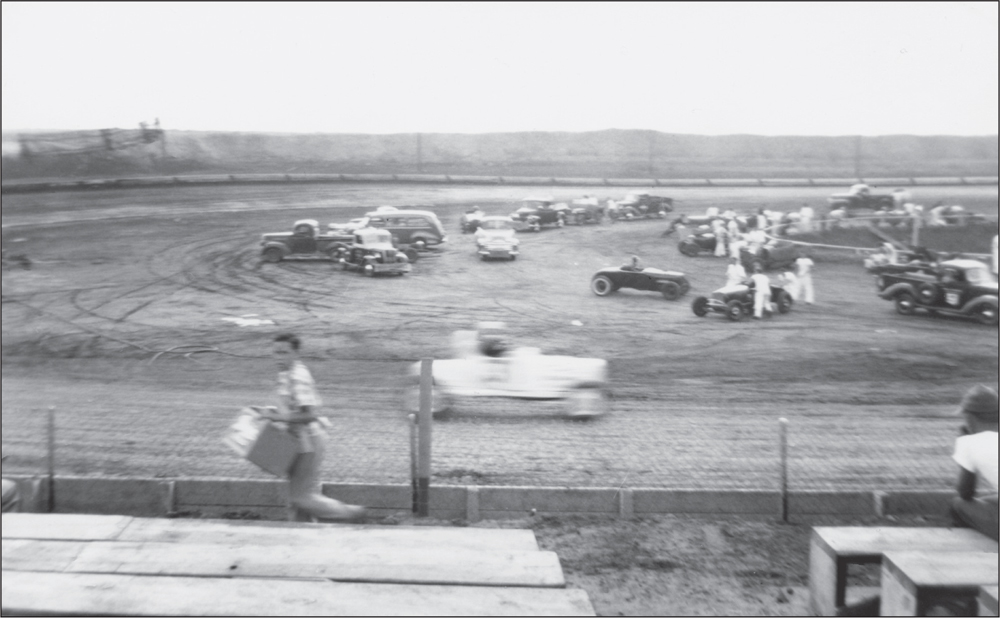
The Thunderbowl was a large, bowl-shaped depression at the top of the bluff overlooking Rincon Point, where Highway 150 meets Carpinteria Avenue. The view in this very early image from 1947 is looking toward the ocean. A high wooden fence would soon be erected on the earth berm in the background. Owner J.F. Slaybaugh lived in a ranch house on the property. (Courtesy of Lee Hammock.)

A Ford roadster spins out on the east turn at the Thunderbowl, kicking up a cloud of dust. Incidents like this, while rarely fatal, began attracting large audiences during the postwar era. These early meets, made up of local lake racers, would soon evolve into the immensely popular sport of jalopy racing. (Courtesy of Lee Hammock.)
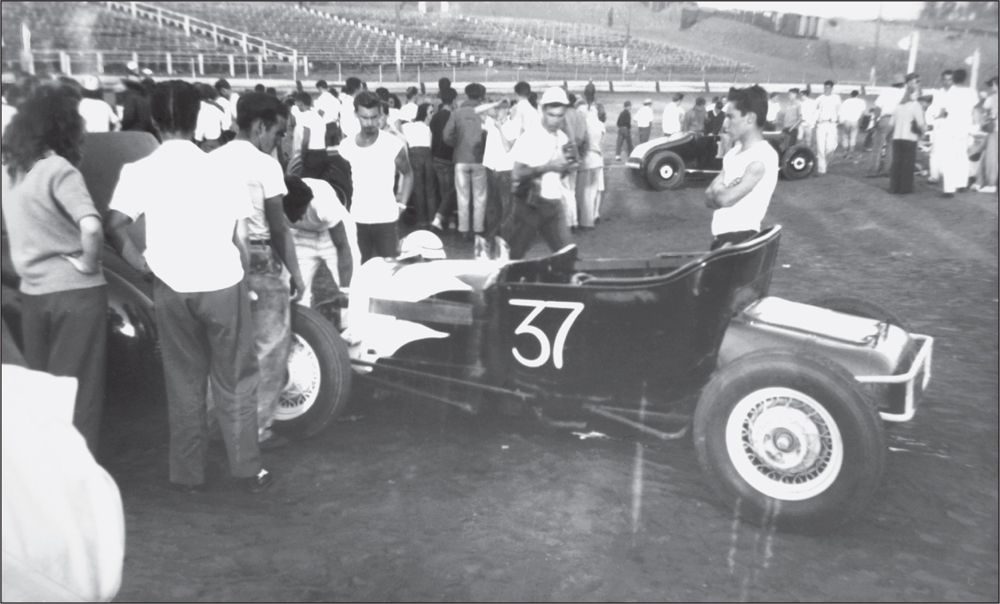
This view, taken on a hot and muggy day in 1947, is facing roughly north. Old Highway 1, now known as Carpinteria Avenue, runs along the top of the slope in the background. The grandstands were simple wood-plank benches stepping up the slope. This whole area is now under several feet of dirt moved there from the Highway 101 expansion project during the 1960s. (Courtesy of Lee Hammock.)
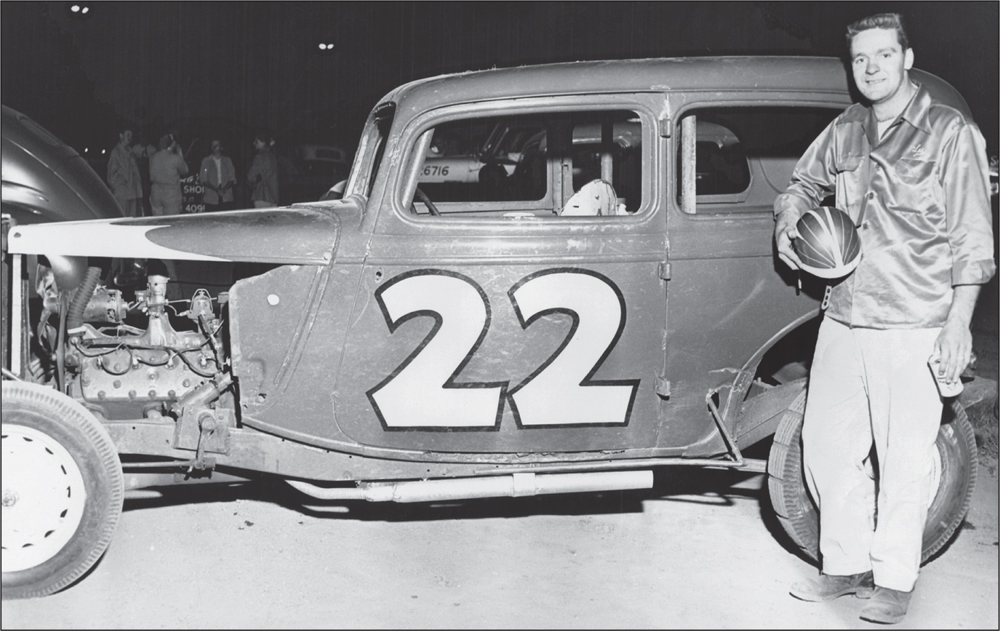
The most successful driver at the Thunderbowl was Lee Hammock. The Missouri native was active in every type of racing in California during the 1940s and 1950s. Lee is seen here posing with a chartreuse-and-white Ford Tudor that was sponsored by the Liberty News Service and Peri’s Garage. (Courtesy of Lee Hammock.)

Here is another shot of the attractively painted jalopy racer. The words “Baby Linda” painted above the windshield refer to Marino Peri’s youngest daughter. No. 22 appears to be in unusually pristine condition for a jalopy racer; this would not last. (Courtesy of Lee Hammock.)
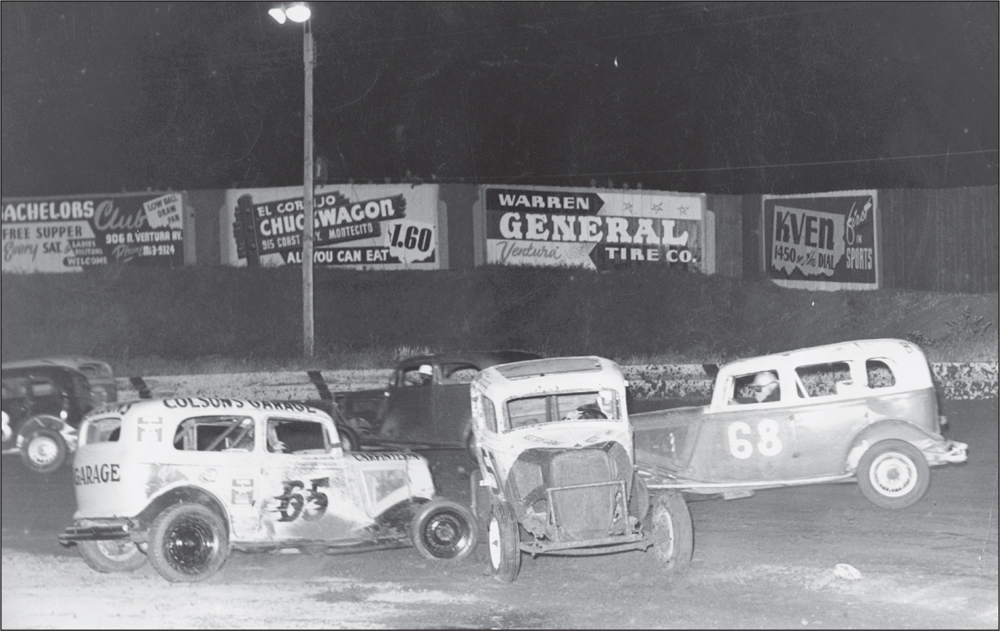
Here is a classic jalopy-race pileup. Lee Hammock (left, driving the yellow 1934 Ford Tudor for Colson’s Garage of Carpinteria) seems to be going in the wrong direction as he engages another Ford during this 1947 race at the Thunderbowl. Note the billboard in the background for the Chuckwagon Restaurant in Montecito, advertising dinner for $1.60. (Courtesy of Lee Hammock.)
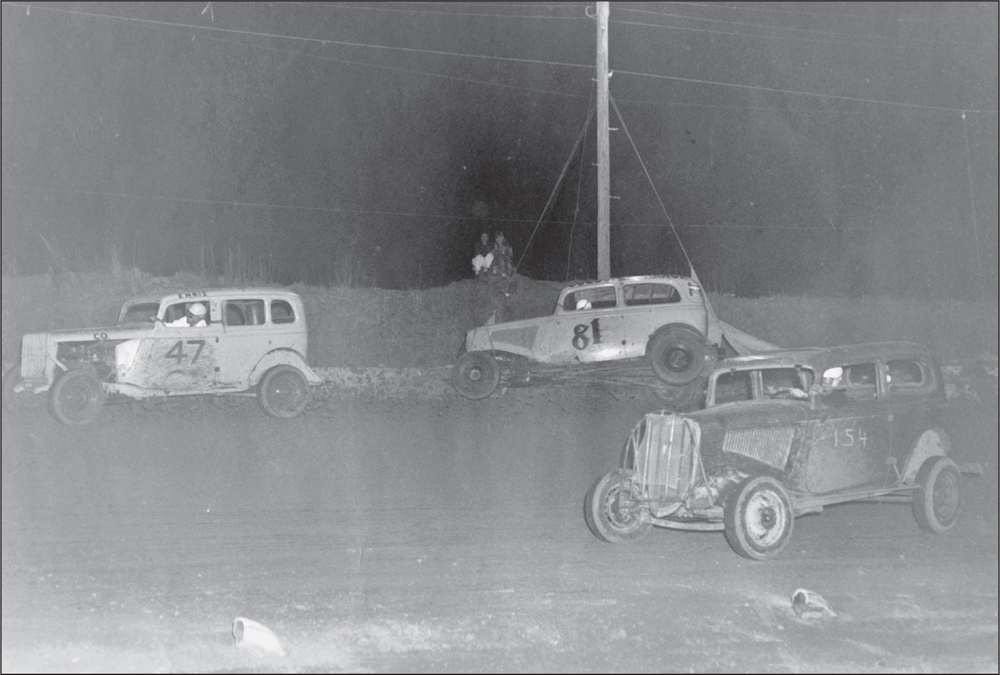
Lee Hammock, in No. 81 at center, hits the earthen berm in his very first race at the Thunderbowl. These were in the early days at the track, before the wooden fence was erected. The couple just visible seated on the berm above Lee must have gotten quite a thrill. (Courtesy of Lee Hammock.)
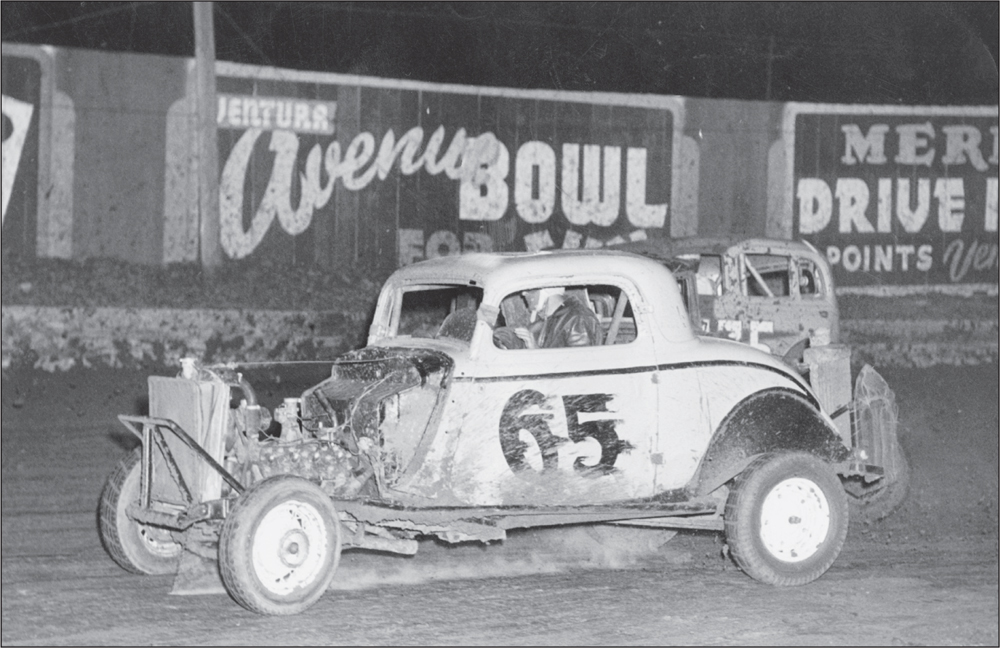
In this shot, Lee Hammock is in another yellow-and-black jalopy for Colson’s, this time a 1934 Coupe. From the looks of it, the jalopy’s radiator has been split in a collision with the car just behind it. Note how the coolant has just begun to leak out. (Courtesy of Lee Hammock.)
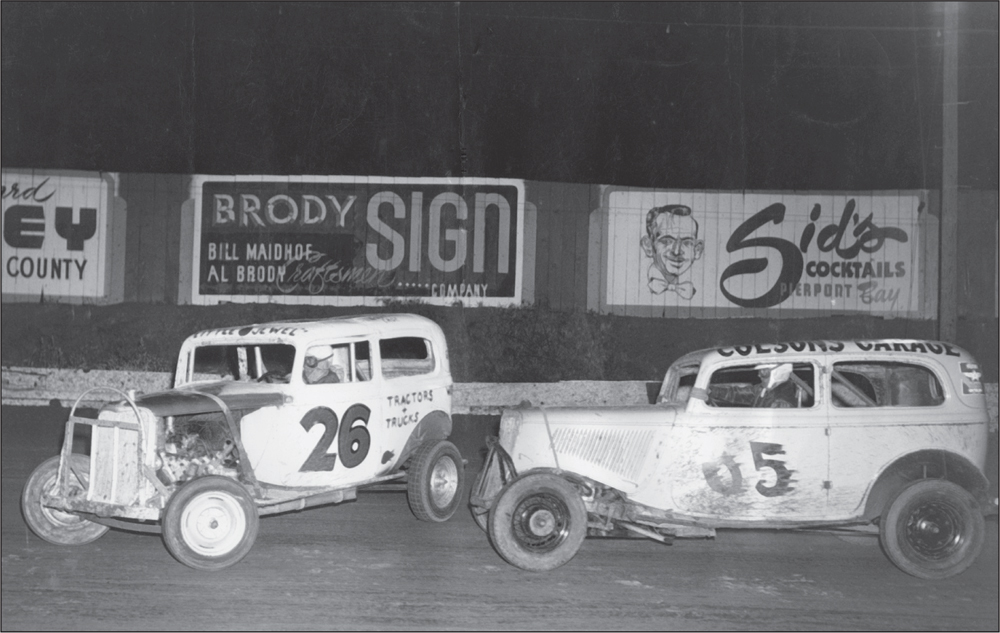
During a jalopy race, if a driver could push an opponent out of the way rather than pass him, so much the better. Here, it looks like Lee Hammock in No. 65 is about to broadside the car that made the mistake of cutting in front of him. The still-intact grill shell on Lee’s car is going to take a beating. (Courtesy of Lee Hammock.)
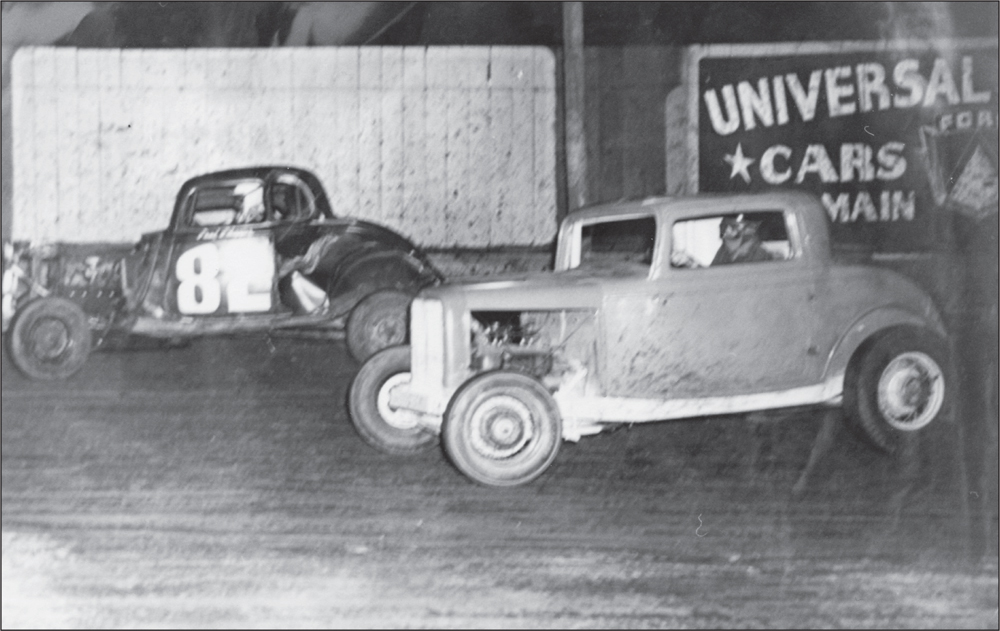
Another well-known driver at Carpinteria was Keith Loomis of Ojai, who also seemed to be everywhere in the late 1940s. Here, he is in one of his first races (right), driving a 1932 Ford powered by an illegal 1933 Model C engine. Note the pristine blue-and-yellow coupe body on his jalopy. It would not stay in that condition for long. (Courtesy of Keith Loomis.)
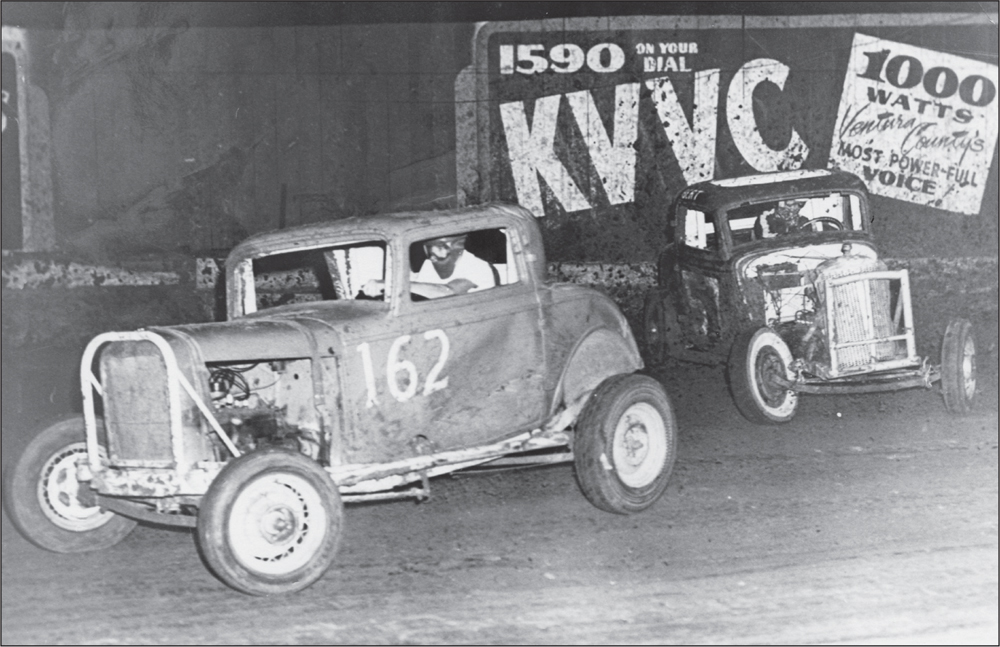
Here, the battered coupe is seen a little later. The late-build four-cylinder Ford engine had a milled head, Smith camshaft, and a Winfield carburetor and manifold. The lighter engine gave the car better handling than the heavier V-8–powered competition, which tended to slide. This also made Loomis very unpopular with the other drivers, who rammed him whenever they got the chance. (Courtesy of Keith Loomis.)
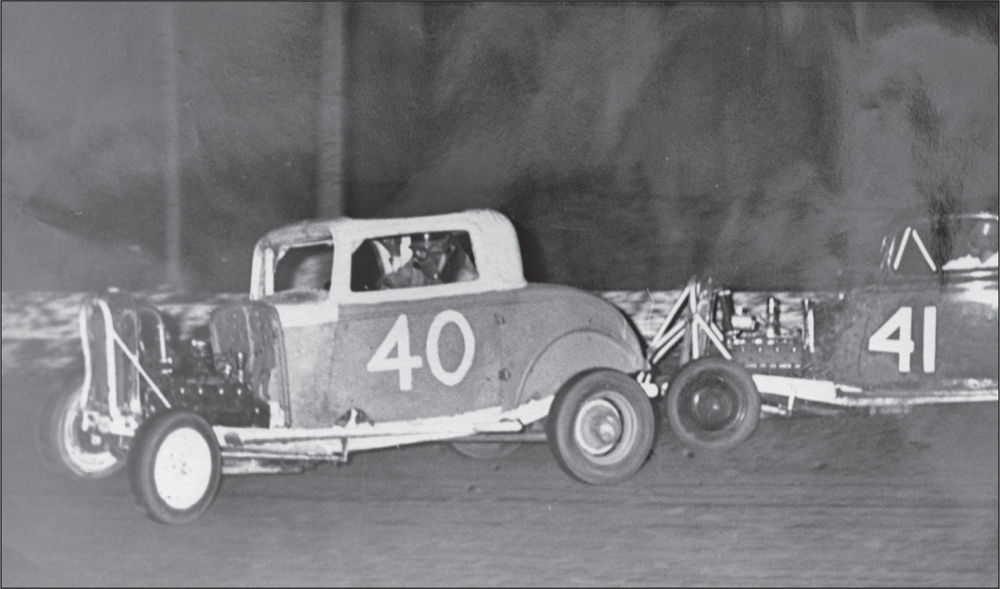
Pressure from his sponsor and the treatment he was receiving from the other drivers finally convinced Loomis to replace the engine with a proper V-8, seen here. He was very successful with the four-banger, approaching second and third place on days when as many as 50 cars were in the heats. (Courtesy of Keith Loomis.)
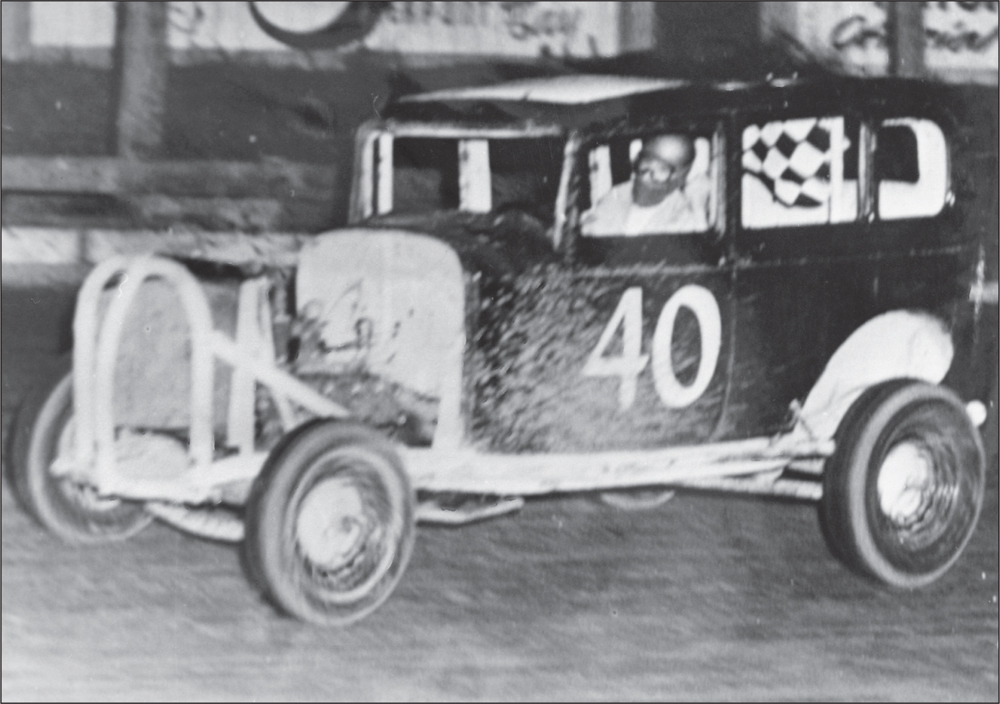
By 1951, Loomis replaced the unpopular coupe with this maroon-and-light-blue 1932 Ford sedan. The early, 21-stud Ford flathead that powered this car was a requirement in jalopy racing. Loomis, pictured here taking a victory lap at Carpinteria, is wearing an aluminum “chrome dome” climbing helmet, favored by many drivers for its economy until it proved unsafe. (Courtesy of Keith Loomis.)
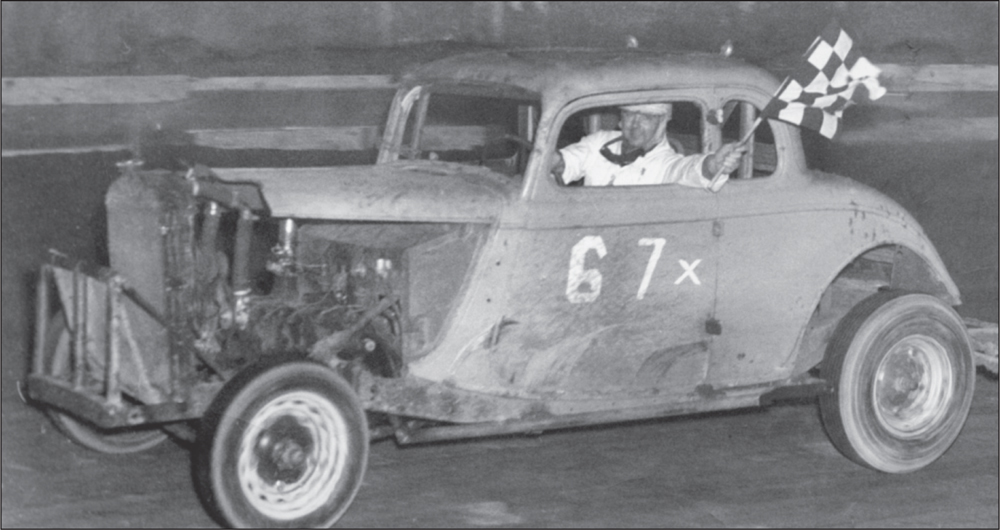
Santa Barbara’s “Wild Bill” Cherry is seen taking a victory lap at Carpinteria’s Thunderbowl racetrack in his cherry-red 1932 Ford jalopy racer. He was so named because of his reckless driving style. Personalities like Cherry could be seen at the Thunderbowl every Monday night during the racing season. (Courtesy of Jesse Torres.)
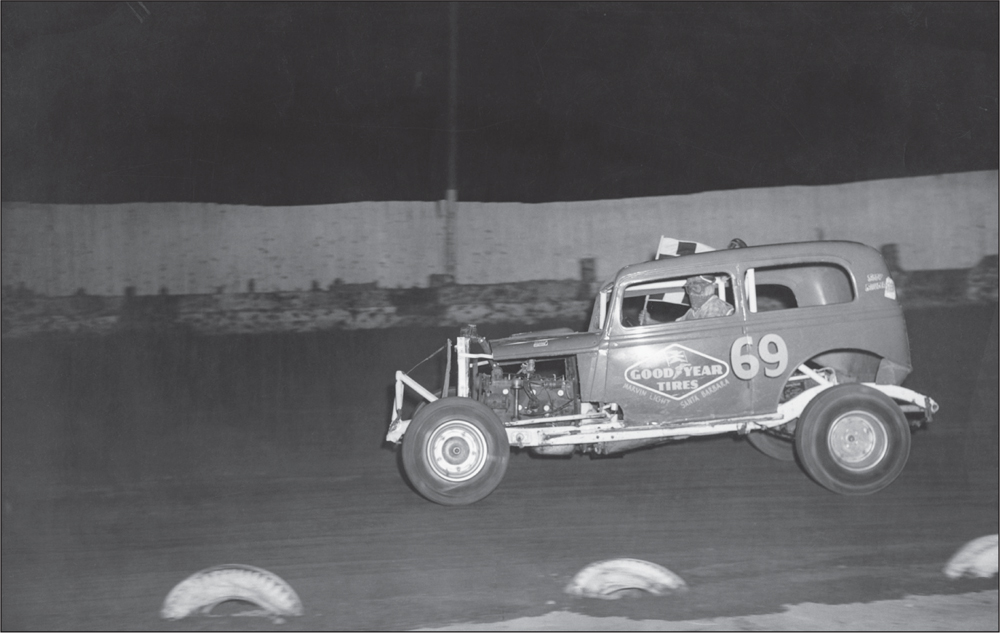
Lee Hammock waves the checkered flag as he makes a victory lap around the Thunderbowl on the night he won the Trophy Dash in 1956. The orange-and-white Chrysler set a track record that stood until the track closed eight years later. (Courtesy of Lee Hammock.)
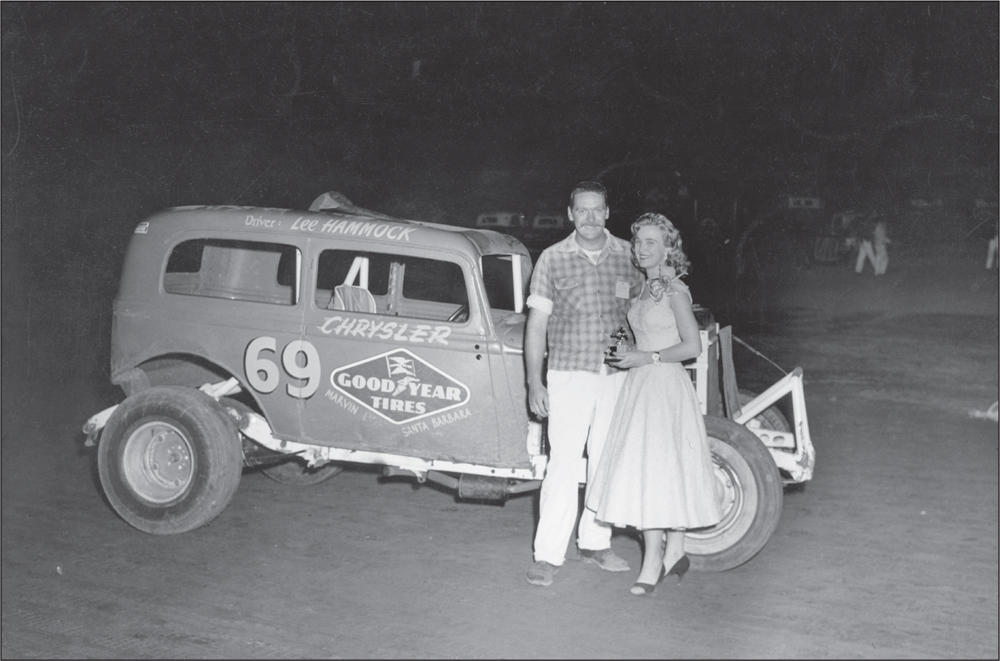
Of course, the Thunderbowl had “trophy girls” to hand over said trophies to the night’s victors. Here, a smiling Lee Hammock is the recipient. Besides the Swing Club, Hammock’s very successful Chrysler was also sponsored by the Marvin Light Tire Company of Santa Barbara. (Courtesy of Lee Hammock.)
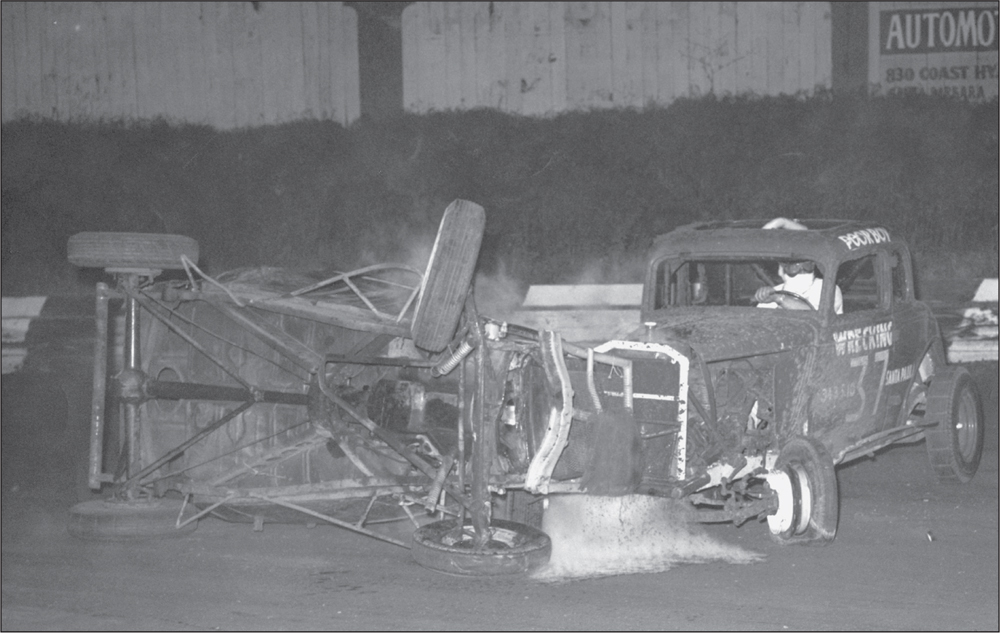
Ventura driver and gas station owner Pete Gallagher goes over on his side as water gushes from his radiator in this Monday-night commotion at the Thunderbowl. The lettering on the side of the jalopy at right appropriately says “wrecking.” This image also gives a good view of the underside of a 1934 Ford. (Courtesy of Pete Gallagher.)
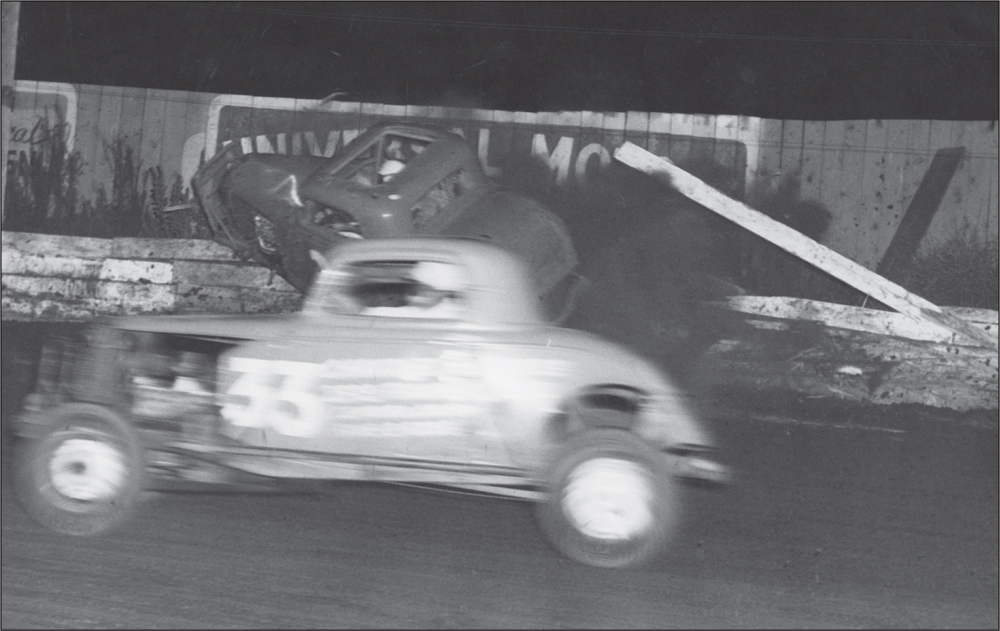
This jalopy has completely lost its front axle in a collision with the barrier on the east turn at the Thunderbowl as another racer flashes by. In spite of frequent wrecks like this one, there were actually very few serious injuries during the whole time the track was in operation. (Courtesy of Pete Gallagher.)
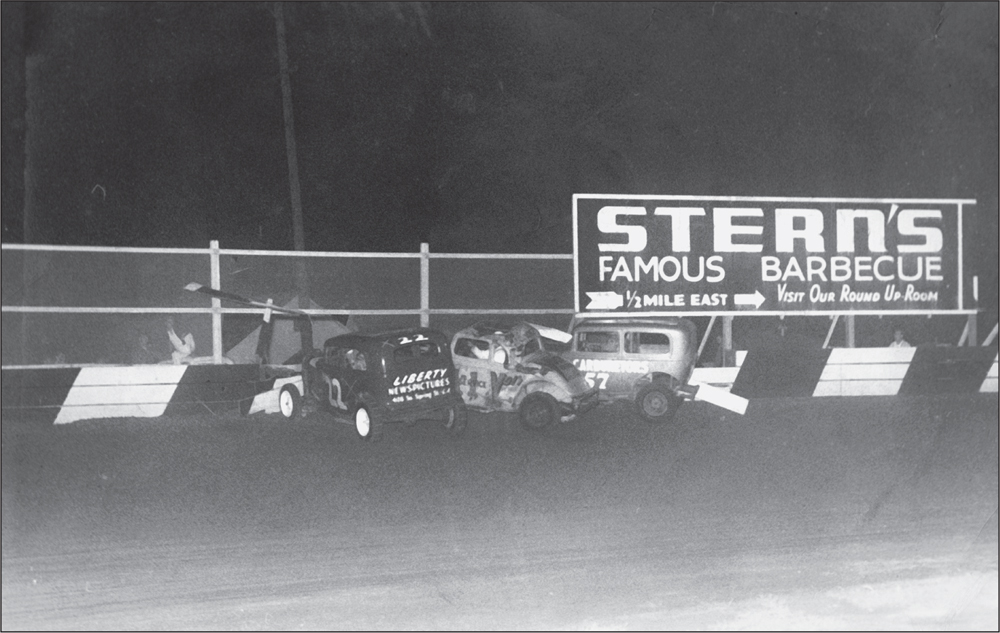
Here is a great action shot as Lee Hammock, in a tangle with two other jalopies, goes through a fence at the track at Gardena, California. Note the flying planks and the spectators scrambling for cover on the left. Fortunately, no one was hurt during this exciting mishap. (Courtesy of Lee Hammock.)
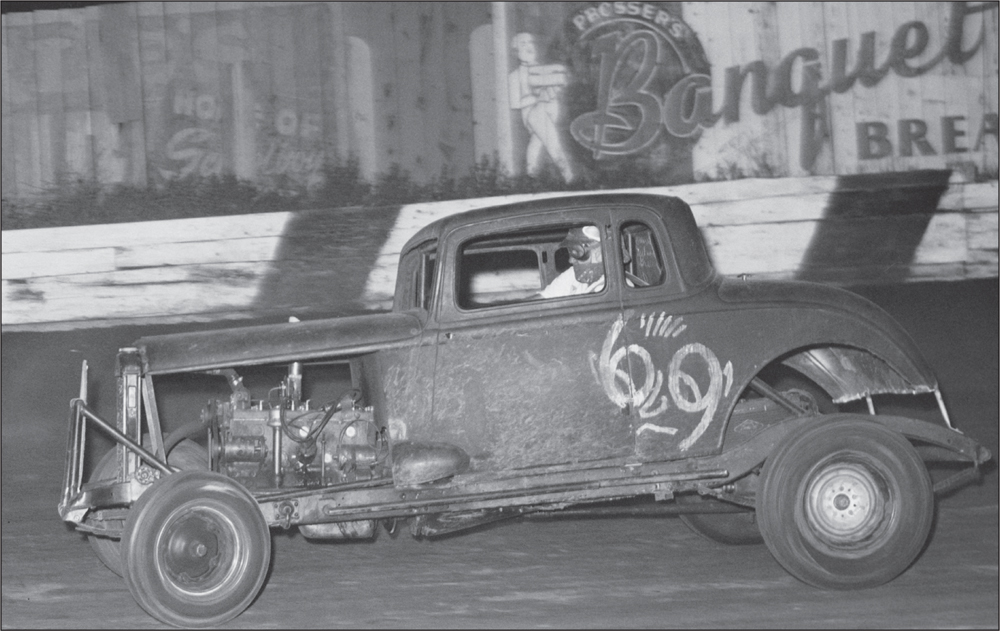
Yet another jalopy raced by Lee Hammock was this primer-gray coupe that he built and co-owned with Robert MacFarland. What is unusual about this vehicle is that it is a 1933 Chrysler coupe rather than a Ford. The 1934 Ford was the dominant type used in jalopy racing. This Chrysler was powered by its original six-cylinder engine. (Courtesy of Lee Hammock.)
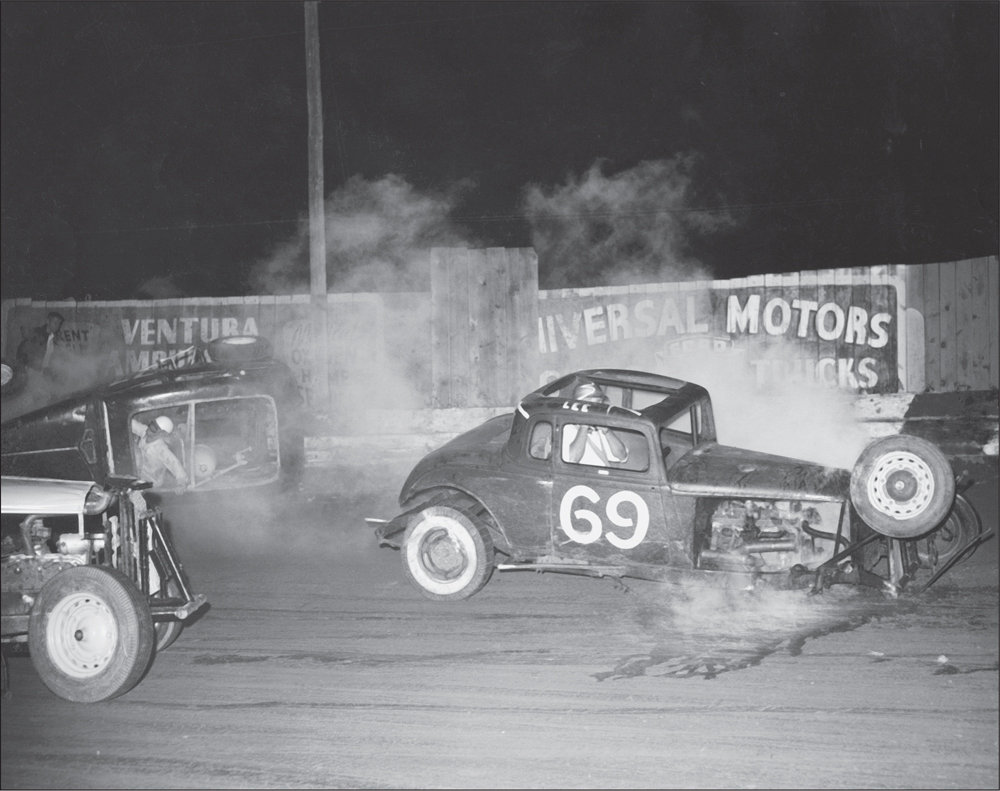
The Chrysler met its end in 1954, as shown in this image. Lee smashed into the wall at Carpinteria after colliding with the car on its side at left, completely snapping off the whole front-axle assembly. As was usually the case, no one was hurt. (Courtesy of Lee Hammock.)
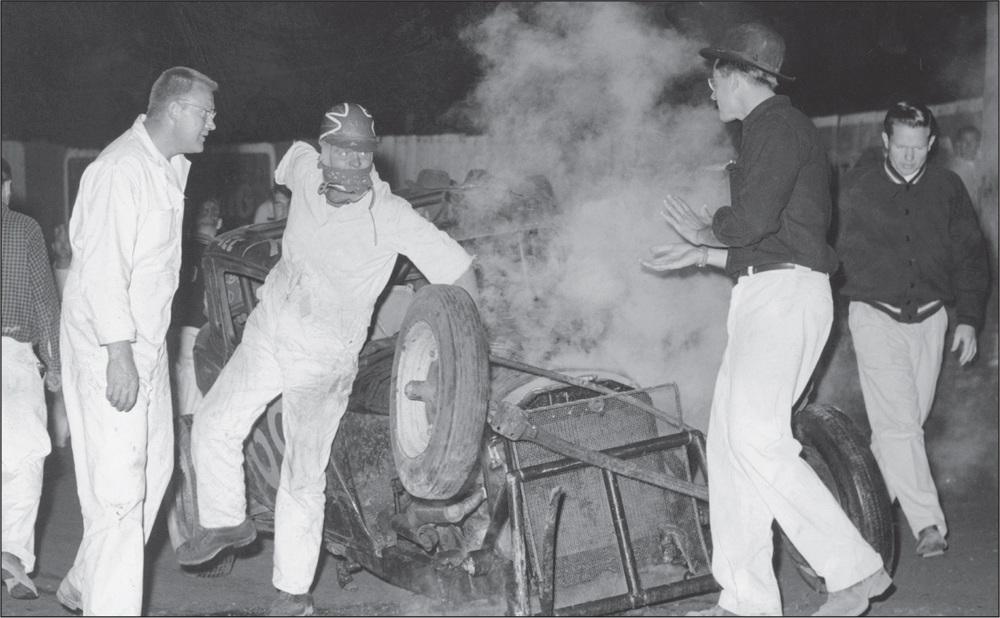
Crawling from the wreckage, Lee Hammock exits the now smashed Chrysler. His partner, Robert MacFarland, is on the left, while Tri-County Racing Association president Randy Claus (center right) and local hot-rodder and Santa Barbara Acceleration Association founder Bob Joehnck (far right) survey the scene. (Courtesy of Lee Hammock.)
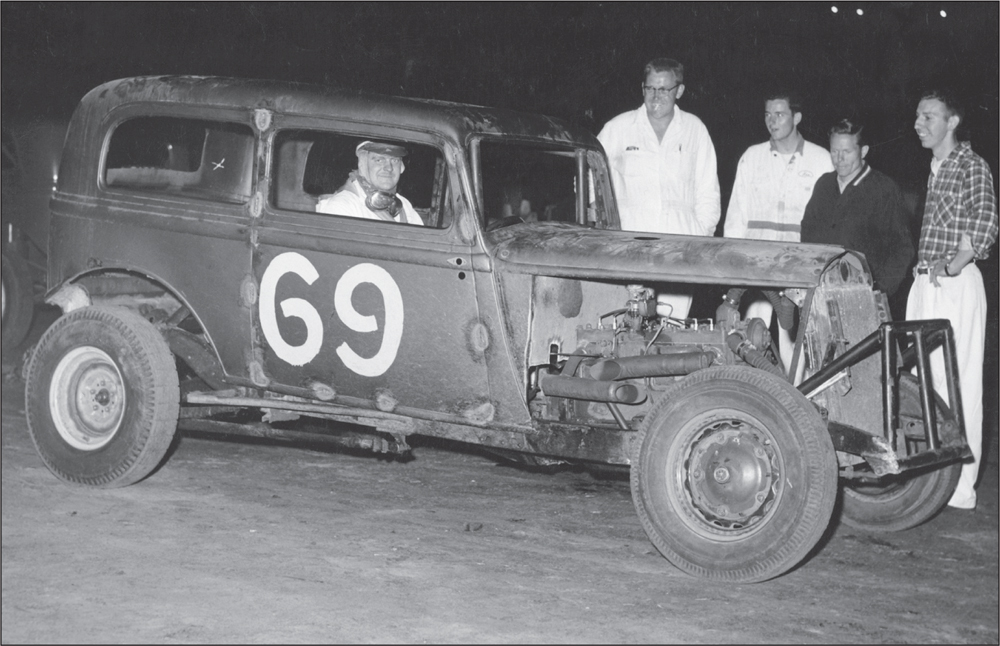
Lee removed the engine from the wrecked coupe and installed it in the 1933 Chrysler sedan. Note how the exhaust came straight out of the short headers on the side of the engine. Standing, from left to right, are Robert MacFarland, an unidentified mechanic, Goleta Drag Strip founder Bob Joehnck, and Paul Vanderley. (Courtesy of Lee Hammock.)
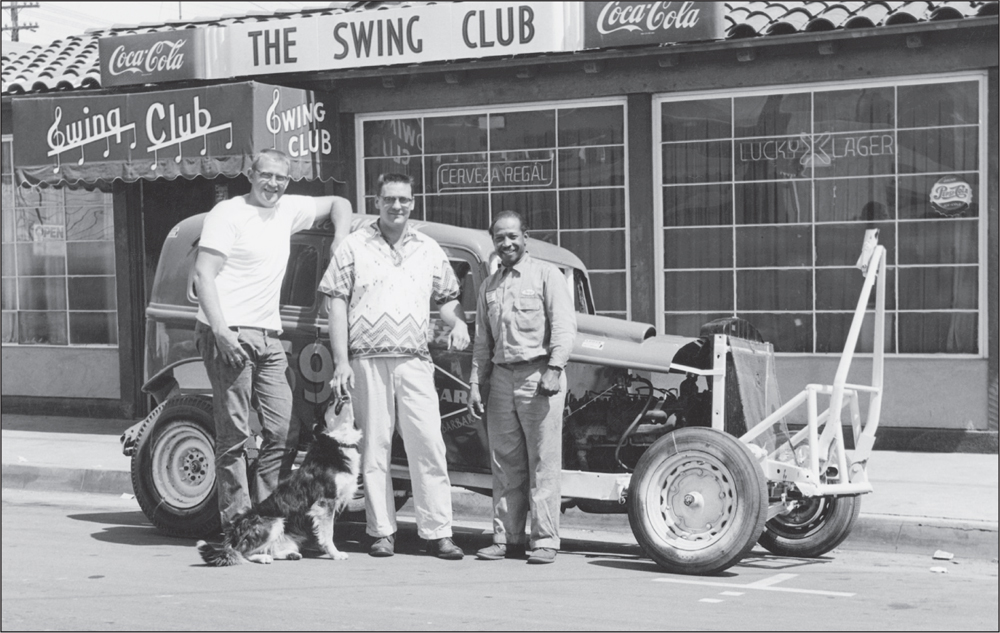
By 1955, the Chrysler had gained a coat of orange paint with white trim and a sponsor. The Swing Club was a popular tavern at 628 East Haley in Santa Barbara owned by George Simpson. Standing, from left to right, are Robert MacFarland, Lee Hammock, and Simpson. Note the tow bar and heavy front nerf bar that have been installed on the sedan. (Courtesy of Lee Hammock.)
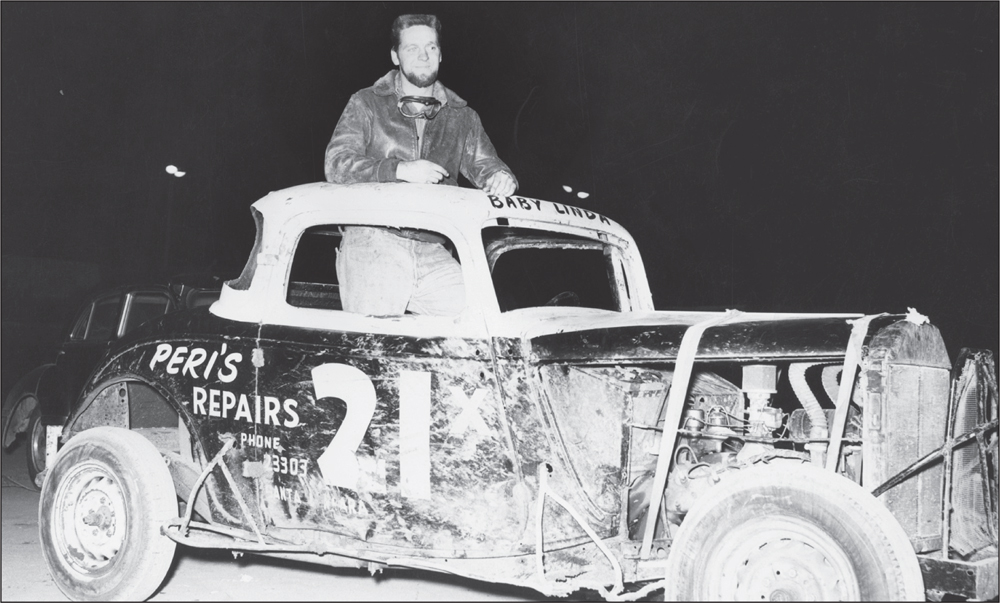
Around 1950, Lee Hammock began to be sponsored by Marino Peri’s Garage of Goleta while driving this red-and-white Ford coupe. Protecting the rear wheels and the radiator are structures made of bent steel bars known as nerfing or nerf bars. Chrome-plated, simplified versions of these would become a common stylistic touch on hot rods throughout the 1950s. (Courtesy of Lee Hammock.)
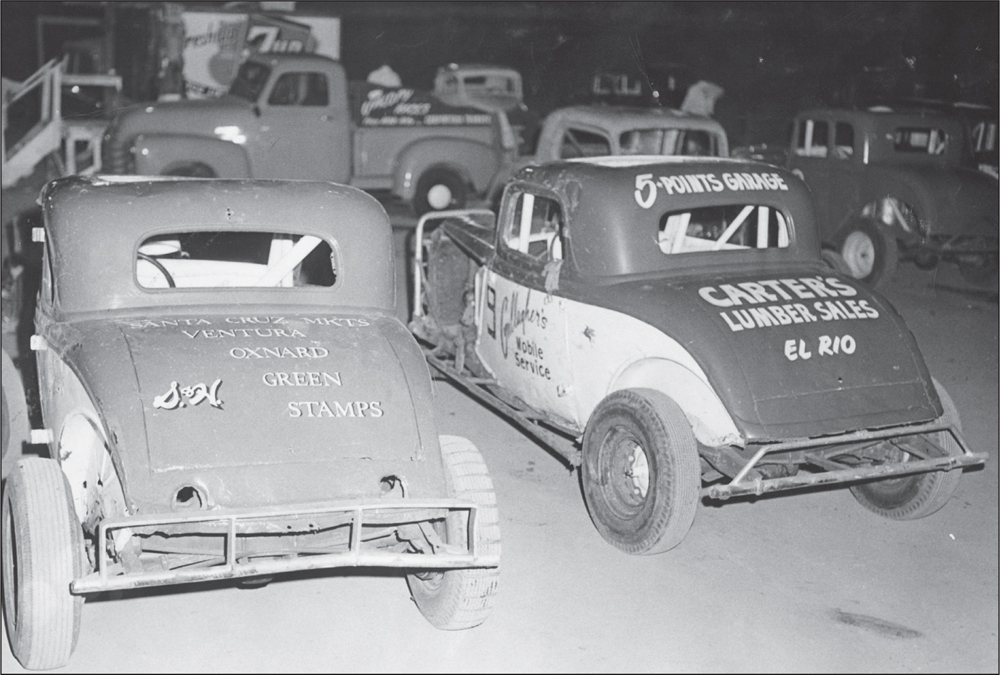
This shot of the infield pit area of the Thunderbowl shows how crowded the field could be on a Monday night. These two coupes were both owned by Pete Gallagher. The green-and-white one on the left was driven by Bill Potter of Ventura, and Gallagher himself drove the red-and-white example on the right. (Courtesy of Pete Gallagher.)
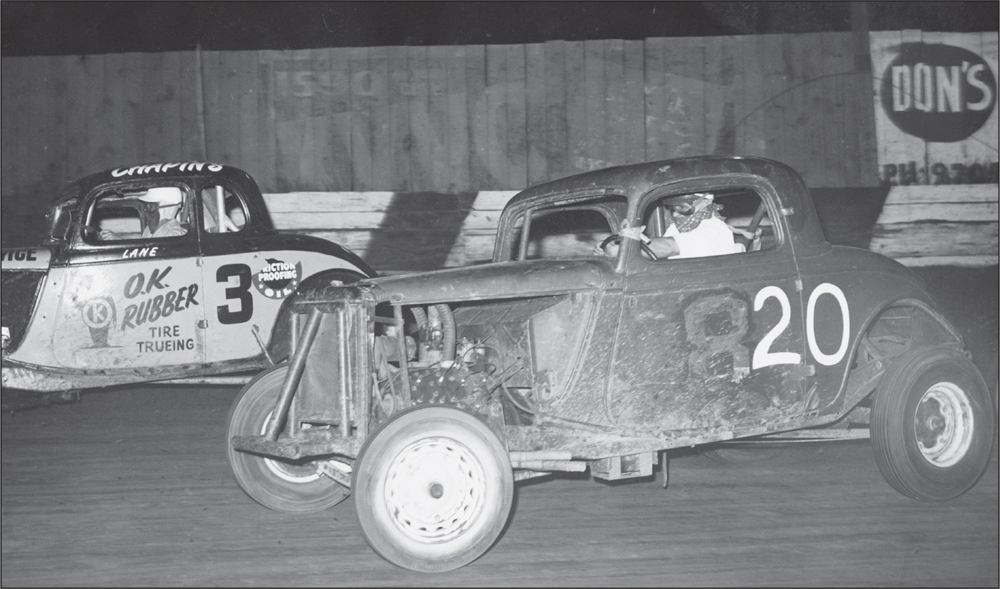
Buford Lane (left, driving a coupe sponsored by Chapin’s Tires of Santa Barbara) engages in a passing duel with Lee Hammock (right, in No. 20) at the Thunderbowl. This image was taken some time later in the racetrack’s career, as evidenced by the faded advertising on the wooden fence in the background. (Courtesy of Lee Hammock.)
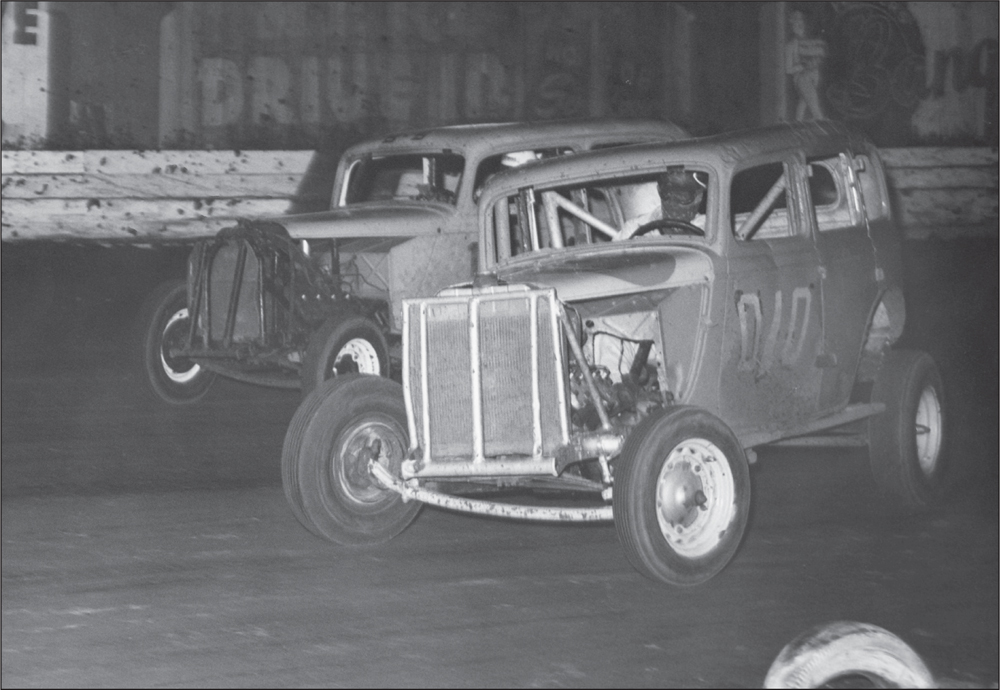
When Lee Hammock was not racing sponsored cars, he raced his own. Here, he is drifting his light-blue-and-coral-pink 1934 Ford sedan around the curve at Carpinteria. Jalopy racers were usually painted in bright colors that provided eye appeal for the crowds of spectators and also helped them identify who was who on the track. (Courtesy of Lee Hammock.)
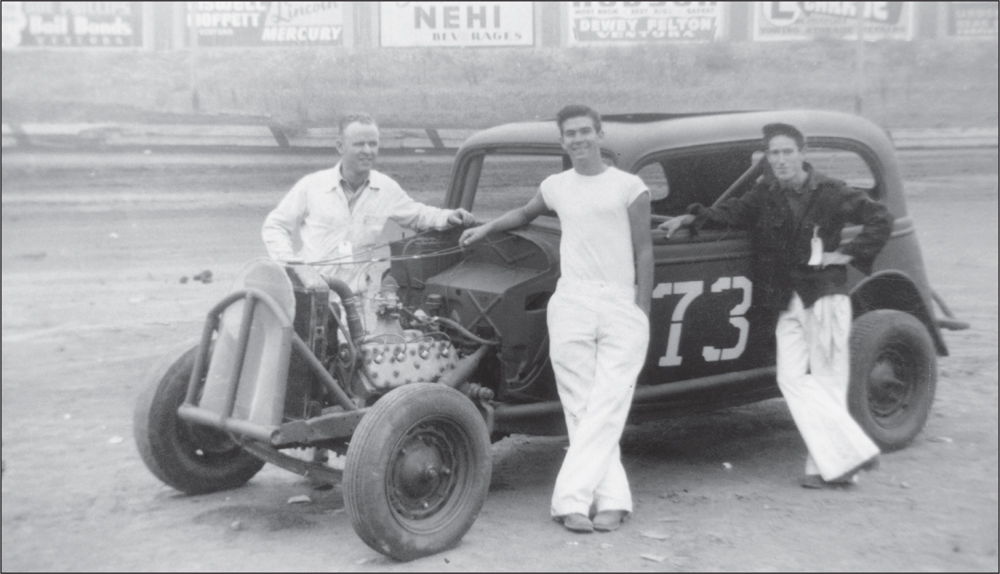
Here are three Carpinterians—Ernie McGuiness (left), Buzz Barker (center), and Hank Curnao—at the Thunderbowl with their 1934 Ford Victoria jalopy in 1952. Lee Hammock, who was everywhere in those days, helped build this one and even drove it a few times. That rare steel Victoria body shell would fetch quite a price on today’s market. (Courtesy of Lee Hammock.)





























